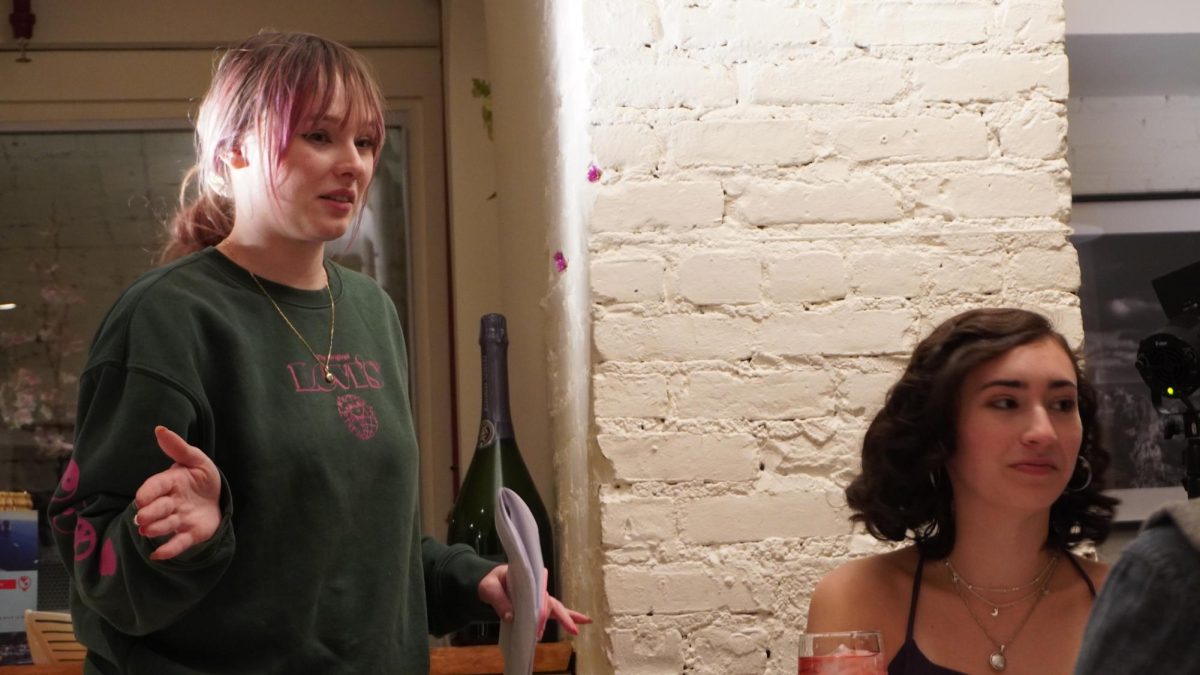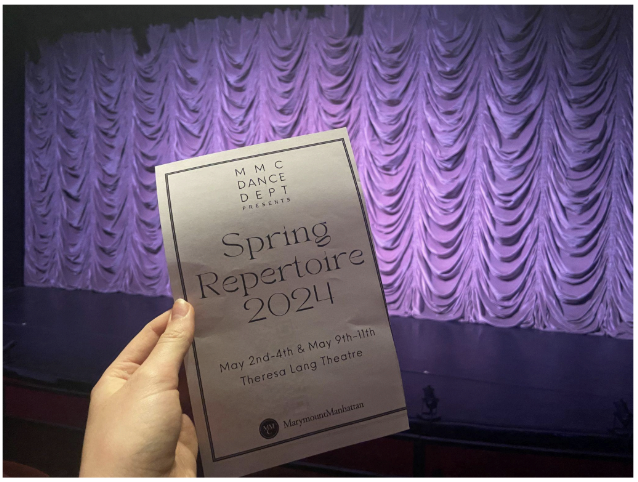Lloyd walks quietly into the studio on the 3rd floor of Carson. He observes as the dancers chat and stretch minutes before class. Once the clock hits 12:59, Culbreath makes small talk, and then the music begins. He begins at the front of the room with a series of breaths and por de bra. Eventually, he begins to pace the room observing each individual dancer “Is that foot really flexed?” “Are you really stretching your arms?” “Are you really breathing?” Some may feel intimidated by his close observation, but Culbreath’s eye for detail is crafted from his experience as a professional. Culbreath trains and educates dancers on what it means to be a “working dancer” in this “rough, demanding, back-biting business.”
Culbreath joined the adjunct faculty at Marymount Manhattan College this Fall semester. The college holds 222 dance majors, making up 12% of the student body at Marymount. In general, 10% of college students continue professionally after receiving their BFA degree. After graduation, students are thrown into the pool of approximately 6000 professionals in NYC according to Dance NYC. Due to the competitive environment in NYC, Culbreath is someone dancers can use as a resource on their journey to booking the job.
Culbreath never thought he would become a professional dancer in NYC. His initial dream was to go to school for comic book illustration. Culbreath was introduced to dance after his diagnosis of asthma as a child. The doctor suggested he engage in physical activity to strengthen his immune system. He began in tap, and eventually continued with jazz, acrobatics, and ballet. What began as a hobby, turned into something more when he saw the original production of Chicago at about 15 years old. “There was a dancer that was all the way downstage, really off the sidelines, performing, he caught my eye… it was the first time I connected the dots and thought, maybe I could do this.” He began taking classes every Saturday in the city with his studio friends.
After grade school, he auditioned for 13-15 schools and was turned away from all of them. His mother insisted he continue his education, so Culbreath attended York College in Queens. He did not dedicate himself to school. After one semester, she said, “this isn’t working”. She agreed to finance him for a year of training in the city and then he would be on his own. Culbreath booked his first job a year later. His first job was the lead in Pippin at a theatre in Jersey. He doesn’t remember why, but he turned it down. Not long after he did the show “Sweet Charity” at the Elms for Dinner theatre in Elmsford, NY. The director/choreographer was Fosse veteran, Gene Foot. That is when his journey began.
Culbreath booked his first Broadway show “Sophisticated Ladies” on his 21st birthday. Just a year later Culbreath performed in Bob Fosse’s “Dancin’” for 3 1/2 months until it closed on Broadway. He didn’t work too closely with Fosse, but his experience with the work began to shift his attention to detail, rather than all the tricks. “As a young dancer, all I wanted to do was turn, jump, and kick my face, and do all those things, and you know, that young dancers do.” Culbreath went on to work many dance jobs after closing the show. His experience came full circle when he booked Fosse’s final show “Big Deal” on Broadway. “The first day of ‘Big Deal’ they said there will be no meet and greet, we will begin work at 10 am, you will be warmed up and ready to dance.” As rehearsals went on Culbreath admired Fosse’s structure of rehearsal. He created a space as identical as possible to the full picture on the Broadway stage. This method made the cast, including Culbreath, feel very prepared for opening night. One day, the cast was rehearsing ‘Beat Me, Daddy.’ After the piece finished, Fosse said, “You know, I have to tell you, you’re the worst ensemble I’ve had to work with in my entire career, and it’s not too late to start firing people.” The entire cast, including Culbreath, thought they were going to get fired. The process was aggressive and increased as they went on. Even though this comment felt like a setback, Culbreath said, “It got us to the performance we needed to give by the time we opened on Broadway.” Dancers grow and learn the most from the times they have to persevere. These lessons inform the way you work as an artist.
Culbreath’s perspective on “the working dancer” is influenced by his experience as a professional. He states 5 ways dancers can be successful in the industry:
- Have good technique
- A strong work ethic; includes being on time, attentive, and a good spirit in the room because your reputation matters.
- You have to bring something to the table that helps the director/choreographer in the creative process. You are hired to fill in the blanks to help them paint the picture they are painting.
- Always be a student of the business. This means doing your homework on the work you are a part of and what came before it. Be critical of other work so you can reflect on what works and what doesn’t.
Culbreath shares some tips on auditioning, and keeping the job!
- First and foremost, put your best foot forward. In the audition room, casting pays attention to how you learn.
- Understand every project has its own needs. When it comes to execution, the material should guide you in finding what’s necessary for the best presentation.
- Understand what you are selling, so you gravitate towards projects you think you are right for. It is something to book a Broadway show, but its another to keep booking, that is not guaranteed.
- And lastly, audition as much as possible, but keep in mind your type cast, and what the director is looking for.
Rejection is a reality of the business when dancers immerse themselves in the audition world. Culbreath has some insight on dealing with rejection.
- You will get a lot of “no’s.” Let passion drive you to move forward
- Believe in yourself. You have something that someone is going to want.
- Give yourself grace. Take a couple of days to come to terms with, “Ok, it wasn’t mine to have.”
“When I walk into the room every day, I hope in one small way I can help dancers achieve their goals. The greatest tool that I can offer beyond technique, is to be 100% honest with them. Sometimes honesty is not what people want to hear. I care most about what will make dancers the most successful. I want to give them perspective into the realities of the business that people didn’t give me.”






